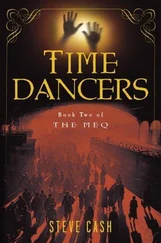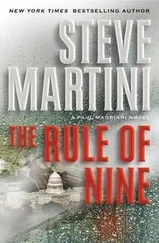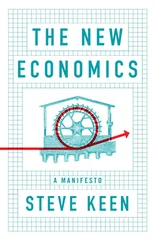Willie Croft did us a big favor and volunteered to fly us to Washington, D.C., in his de Havilland, and we left St. Louis the next day. Jack was waiting for us at the airport. He escorted us to New York by train, where we boarded our ship in plenty of time. Before wishing us farewell, Jack made all the proper arrangements and introductions, and that evening, accompanied by several loud blows of the horn, we set sail at 9:00 P.M. sharp.
Opari and I had not seen each other in eighteen years, yet during the voyage we spoke very little, although we were never outside each other’s presence for more than a few minutes. When we were able to be on our own, we walked the decks of the ship, smelling the salty air, watching the ocean and the stars at night, oblivious to everything but the moment. I kissed her eyelids and she kissed the palms of my hands. I slept well, dreamed little, and woke each morning to find her next to me. My Ameq — my love, Opari.
On the morning of April 13, 1954, we entered the harbor of Istanbul, sailing slowly past the Hagia Sophia. High on the hill, surrounded by minarets and spires, and framed against a cloudless blue sky, it was majestic and magnificent, exactly as the Emperor Justinian wanted it to appear fourteen centuries earlier.
“There lies our letter box, with directions from Geaxi inside, no doubt,” Sailor said.
“Letter box?” I asked.
“Designed and installed secretly for our use in 537 by Isidore of Miletus.”
“Who was he?”
“A friend of ours, and also one of the two designers of the Hagia Sophia.”
We disembarked along with all the children in the entourage, staying on the back edge of the group and keeping a close watch for Cardinal. He appeared almost at once. He was talking with a Turkish customs agent and showing him a clutch of papers in his hand. Now in his sixties, Cardinal wore a dark business suit, and his thick black hair was streaked with silver, but he still reminded me a great deal of his brother, Sak. Once he saw us approaching, he pointed to us, and within minutes we were separated from the others and led through the crowd by the customs agent. Cardinal looked at me as we were walking out. He winked and said, “Welcome to Istanbul, Zianno.”
Waiting for us in his tour bus was Kerem, a gap-toothed man with deep creases in his face and large brown eyes that seemed to smile even when he wasn’t smiling. Cardinal referred to him as “my man in the street.” Kerem’s tour bus was painted bright blue and gold outside and lined inside with multicolored fringe and tassels, tiny hanging brass bells and cymbals, and dozens of faded portraits of the founder of modern Turkey, Mustafa Kemal, better known as Ataturk.
We were driven through crowded and chaotic streets to a small hotel only a few blocks from the Tokapi Palace called the Empress Zoe. It was quiet and clean and easily within walking distance of the Hagia Sophia. Sailor decided to wait until the next day before checking on the “letter box.” In the evening, Kerem took us to his favorite restaurant, where we ate a long and delicious meal and listened to his stories in broken English about the mysteries of Istanbul, and there were many. Cardinal said Kerem seemed to know everyone in the city, if not personally, then through a friend, a cousin, or an uncle. At one point, he suddenly stopped talking and stared hard into Ray’s eyes. He looked concerned and slightly afraid. “Your eyes are much green,” he said. “Do you possess the nazar? ”
Ray glanced around the table at each of us. “I don’t think so. What is it?”
“The evil eye,” Kerem said. “In Turkey, green eyes are much dangerous for the nazar .”
Ray told Kerem he had nothing to worry about and turned to me. He winked. “Did you hear that, Z? You better be on your best behavior or I just might zap you with the evil eye.” Everyone laughed out loud, even Kerem, after he realized it was a joke. Finally, we returned to the hotel and our rooms. It felt good to lie down and spend the night in a comfortable bed curled up next to Opari.
Sailor woke me the next morning and the two of us left for the Hagia Sophia while the others waited at the hotel. He led the way through narrow, noisy alleys, past open windows and the smell of mutton and vinegar. I heard at least three different languages being spoken in the streets. Sailor never said a word, and we arrived at the southwestern entrance only minutes after they had opened the doors. Visitors and tourists were already spread throughout the cavernous old church and mosque. As we walked in, Sailor said, “The last time I was here, the air was filled with incense and smoke.”
“When was that?” I asked.
“A thousand years ago,” he said, glancing in all directions.
“Exactly a thousand?”
“Exactly.”
Sailor said the letter box was in an upper enclosure, a central gallery called the “Loge of the Empress.” It was where the Empress and her ladies of the court gathered to observe the proceedings below. The letter box was hidden in a wall directly behind where the Empress once stood. On the third step of the marble stairs leading up to the gallery, Sailor and I suddenly stopped and stared at each other. We both felt the same thing at once — the unmistakable presence of Meq.
Side by side, Sailor and I entered the upper gallery. The long, wide room was much larger than I had expected. At least twenty people were scattered throughout and it still seemed empty. We kept walking. In the central gallery, a few were peering over the balcony, staring into the vast space of the great dome. A round, green stone marked the position of the throne of the Empress.
Sailor saw them first. “Over there,” he said, nodding to the right.
Forty feet away, directly behind the green stone, there appeared to be three children standing near the wall. Of course, they were anything but children, and they were waiting for us. It was Geaxi, Mowsel, and Zeru-Meq.
As we approached, I smiled to myself. For disguise, Mowsel and Zeru-Meq were dressed like any other kid in the streets of modern Istanbul and could blend in easily, but Geaxi defied all trends or fashions and didn’t seem worried about any disguise. She was dressed as always — black leather leggings and a black vest held together with strips of leather attached to bone, a black beret, and ballet shoes. “There is only one Geaxi,” I whispered. “Indeed,” Sailor said.
Even though we hadn’t seen the three of them in eighteen years, Sailor ignored traditional greetings and walked straight to Geaxi while acknowledging all three with a single nod. “Quite a surprise,” he said. “I was anticipating finding only directions. I do not suppose this is a coincidence.”
“The letter box is no longer in the wall,” Geaxi said.
Sailor looked perplexed. “I do not understand. That is impossible. Where is it?”
“Gone.”
Geaxi gracefully stepped to one side, letting Sailor see for himself. He reached out and touched the area in the wall where the letter box had been concealed. “The secret stones have been replaced!”
“Centuries ago, Umla-Meq. It is true,” Mowsel said with a half smile, barely exposing the gap of his missing front tooth. He was standing next to Geaxi with his head leaning back, as if he was staring at the ceiling.
“We have been away too long, old one,” Zeru-Meq added. His black hair was longer now, curling around his ears and over his collar. His green eyes flashed when he spoke.
“None of us have used this building since the Ottomans came to power,” Geaxi said.
Sailor let the truth sink in for several moments. He seemed to be remembering or realizing something. He looked over his shoulder toward the balcony and the green stone marking the throne of the Empress. Then Sailor laughed, twice. He asked Geaxi, “How did you know we would be here today?”
Читать дальше












